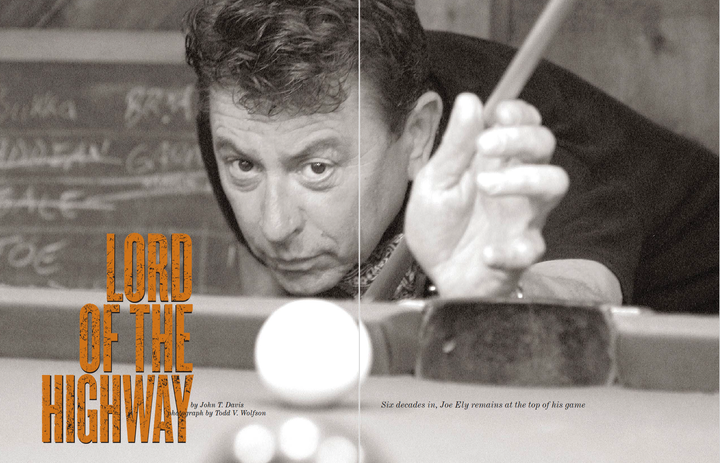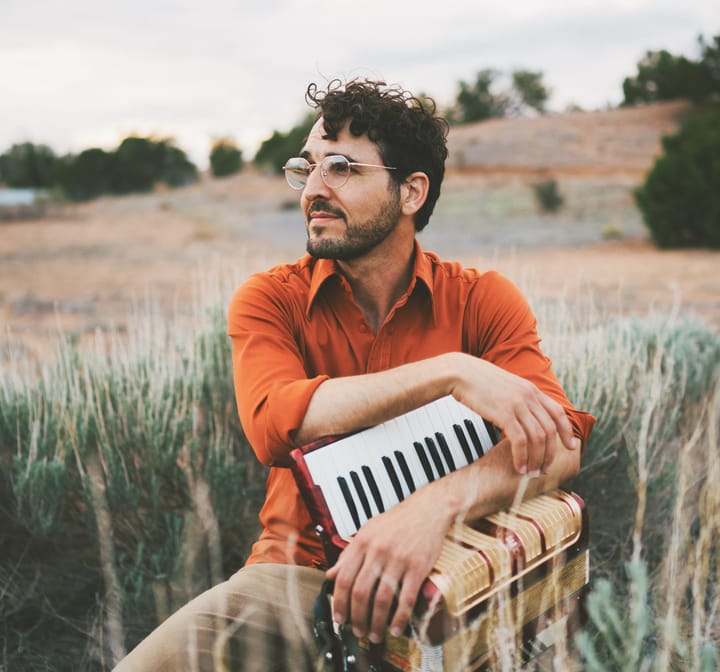"The dancing stops, but the music goes on."
In the deepest blue of night, in the wee hours of September 29th, Mickey Newbury drifted off to dream at his home in rural Oregon, and never came back. His passing was no surprise, as he'd been battling a severe respiratory illness for many years. At 62, he left behind his wife of 33 years, five children, his mother, his brother, a sprawling community of friends and fans...and hundreds of songs that confirm his legacy as one of the most indelible musical forces of the twentieth century.
The evidence, frankly, is overwhelming. Historian Joe Ziemer has compiled a continually-growing list of 550 recordings of Newbury songs by more than 400 different artists.
Some of country's biggest stars regularly raided Newbury's catalog: Don Gibson (twelve cuts), Waylon Jennings (eight), Kenny Rogers (six), Johnny Rodriguez (five). Many of country's leading ladies looked to him, too, among them Tammy Wynette, Sammi Smith, Brenda Lee and Lynn Anderson. Plenty of his contemporaries who also became legendary songwriters covered him: Willie Nelson, Bobby Bare, Kris Kristofferson, Roger Miller.
Newbury's songs transcended barriers of color and genre, as evidenced by the renditions recorded by Ray Charles, B.B. King, Etta James, Bobby Blue Bland, Solomon Burke, Don Cherry, and Buffy Sainte-Marie. Hip rock 'n' rollers might be surprised to know Newbury's songs have been recorded by Alex Chilton (in his teenage days with the Box Tops), Scott Walker, and Nick Cave. As for classic rock, it doesn't get any more classic than Roy Orbison and Jerry Lee Lewis (four Newbury covers each). And then there's Elvis Presley, who regularly closed his concerts in the 1970s with "An American Trilogy", Newbury's ingenious arrangement of the Civil War-era songs "Battle Hymn Of The Republic", "Dixie", and "All My Trials".
Newbury himself took "An American Trilogy" to #26 on the Billboard Top 40 in early 1972, his only chart appearance as a recording artist. The significance of Newbury's own records, however, reaches far beyond the charts. Despite his reputation as a "songwriter's songwriter," Newbury was also blessed with an angelic tenor voice, and his albums aspire to a breathtaking arc of artistry that other performers' versions of his songs couldn't approach.
Though RCA released two early records that were basically just collections of songwriting demos, Newbury's proper debut album was Looks Like Rain, issued on Mercury in 1969. Newbury's singular musical vision was clear from the outset: Exquisitely crafted songs segued into each other in sweeping suites, tied together with rain and train sounds borrowed from the Mystic Moods Orchestra's One Stormy Night LP. An air of melancholy pervaded the proceedings; though in conversation Newbury was plenty jovial and charming (as the stage-patter on his 1973 live album attested), his music remained imbued with a signature sadness for the rest of his days.
The five albums that followed on Elektra from 1970-75 -- Frisco Mabel Joy, Heaven Help The Child, Live At Montezuma Hall, I Came To Hear The Music, and Lovers -- stand as the finest oeuvre of any singer-songwriter during that period (notwithstanding the era's considerable contributions from Tom Waits, Neil Young, Van Morrison, John Prine, Joni Mitchell, Jackson Browne and Bruce Springsteen). It was a fertile time for budding songwriters, and Newbury was the best. The closest to him was Townes Van Zandt -- and it was Newbury who mentored Van Zandt in the late 1960s, convincing Townes to make the same journey from Houston to Nashville that Newbury himself had made in the early '60s.
It was largely through Townes that I became aware of Mickey's music. I was interviewing Van Zandt by phone in February 1992 for a daily-newspaper preview of his forthcoming appearance with Guy Clark at the Backstage in Seattle; I informed Townes that Mickey Newbury had been added to the bill, and asked if he knew anything about him. I promptly got an earful. "He heard me at a joint in Texas when I was a young hippie, and he said, 'You've got to come to Nashville,'" Townes related, before sharing a story of his wife Jeanene's first reaction to hearing Mickey play: "I tried to explain how pretty he sings, and we went and saw him, and her jaw just dropped open. You can't explain that voice, right? And afterwards, Jeanene went up and asked him, 'I want you to sing "Weeping Like A Willow Tree" at my funeral.' And he said, 'Well, I will if you'll buy the ticket!'"
In the past decade, singing became increasingly difficult for Mickey. The respiratory ailments -- perhaps emphysema but never definitively diagnosed as such, though likely influenced both by Newbury's smoking and a genetic susceptibility to lung problems -- eventually required that he be hooked up to an oxygen supply full-time. And yet, on those increasingly rare occasions when his voice took flight, the magic that Townes had been unable to explain still remained.
My first attempt to hear Mickey play came in June 1999, when he was booked to play at the Kerrville Folk Festival in Texas. I was attending another festival in St. Louis the same weekend, but decided it was worth making the drive of, oh, 1,000 miles south to Kerrville to hear Mickey. I arrived only to discover he had canceled for health-related reasons -- not surprising, given his gradually deteriorating condition.
When I heard Mickey was on the bill for the Frank Brown Songwriters Festival at the FloraBama Lounge on the Alabama/Florida border in November 1999, I booked a flight from Seattle to Alabama, and this time Newbury was able to perform. He held the audience rapt for about an hour, accompanied by his good friend Jack Williams, telling stories and playing songs both old and new. I remember being particularly struck by a new tune called "So Sad" that sounded about as strong as anything he'd ever written.
The FloraBama show was Newbury's final public performance, but it was far from his last musical endeavor. Back in Oregon, he continued to write and record as much as possible, while his longtime friend Bob Rosemurgy of Escanaba, Michigan, poured considerable time and energy into restoring Newbury's catalog and returning it to the marketplace. Paramount among those efforts was The Mickey Newbury Collection, a box set that gathered up Newbury's ten releases from 1969-1981, none of which had ever been available on CD.
The FloraBama experience also nourished a seed that had been planted in my own head a few months earlier. The result was Frisco Mabel Joy Revisited, a modern-day remake of Newbury's best-known album by contemporary artists, released in the fall of 2000 (on Appleseed in the U.S. and on Glitterhouse overseas). Co-produced by Walkabouts co-leader Chris Eckman and me, it was largely an attempt to expose Newbury's music to a generation that seemed all too unfamiliar with his work (though we were honored to have Newbury's old pal Kris Kristofferson take part as well).
A few days after we received the finished copies of Frisco Mabel Joy Revisited, Eckman and I (along with his Walkabouts comrade Carla Torgerson and their soundman John Parker) drove down to Mickey's home outside Springfield, Oregon, to personally deliver a copy to him. We figured to be there about ten minutes, just to say hello; Mickey and I had talked on the phone a few times while Revisited was in the works, but it wasn't like we were longtime friends, and we didn't wish to intrude.
Mickey had other ideas. Roused from his resting place in the bedroom, he dragged his oxygen tubes out into the living room, along with a notebook and guitar, and proceeded to spend the entire afternoon sharing his wit, wisdom, words and music with us. "We went down to Springfield for a simple delivery," Chris mused in correspondence this week, "and we left with an epic memory."
Yet if we felt somehow singled-out for such special treatment, the truth was that Mickey did this kind of thing all the time. It takes no more than a couple hours reading the ruminations of his friends and fans on Newbury's website message-board, fondly dubbed the "front porch" by its participants, to realize this. One after another in the days that followed Newbury's death, regulars related the times Newbury enlightened their lives during a personal visit or a phone conversation or an e-mail exchange.
How he ever found time to continue writing songs, I'll never know -- but he did, and his final album of new material, A Long Road Home, released in late 2001, is the testifying masterpiece. What I remember most about our September 2000 visit is Newbury's fervent conviction that there remained vital music within him which demanded to be brought forth before he ran out of time. With the help of producer Paula Wolak and many others, he got it done. "So Sad" is every bit as engaging as it had been that night at the FloraBama; "I Don't Love You" is as simple and sorrowful as any song has ever been; and "In '59" and "A Long Road Home" are ten-minute bookending odysseys that carry the journey to its destination. "A brave man to write his own epitaph," my friend Michael Fracasso observed.
And yet it's not quite the end. Rosemurgy confirms that Newbury wrote and recorded more new songs that remain to be released. In addition, older material continues to be revived and restored, such as the Winter Winds disc issued earlier this year combining a March 1994 live recording with supplemental instrumentation. A video of that recording, done at Nashville's Hermitage Hotel with Jack Williams, is also in the works.
Mostly, though, what lingers are sweet memories. A photo on my refrigerator caught my eye the other day, a souvenir from a mid-March afternoon in 2000 when eleven musicians gathered in the back room of a bar in Austin to record a song together. For a moment I gazed upon this gathering of pickers -- Bob Neuwirth, Mark Olson, Victoria Williams, Kevin Russell, Max Johnston, Greg Leisz, Lisa Mednick, Chuck Prophet, Murry Hammond, Walter Salas-Humara, and the late Mambo John Treanor -- and marveled about how in the world they all ended up there that day. The reason was Mickey Newbury.
"Doggone my soul, how I love them old songs."




Comments ()